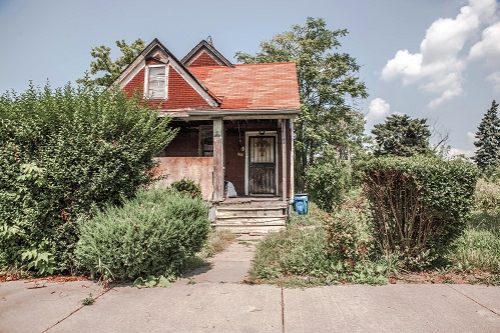What is a wind and hail cosmetic damage exclusion?
Cosmetic damage is any damage that affects the appearance of your home, but doesn't impact the function. Think of it like getting your teeth whitened; having yellow teeth doesn't affect your ability to chew, so it's considered cosmetic and isn't covered by dental insurance. Insurance companies may look at hail damage the same way.
J. Robert Hunter, director of insurance for the Consumer Federation of America in Washington, D.C., says the big problem for homeowners is determining what constitutes cosmetic damage. Even cosmetic damage can affect the value of your home.

"A home with siding that's dented keeps working, but it looks terrible and will cause the home to drop in value," says Hunter. "Insurance companies should make it whole, even if the home still functions. This is a lawsuit waiting to happen because of the ambiguous definition of cosmetic damage."
Harrington says home insurance policies insure the property for physical damage, not their economic value.
"Of course, home insurance can't pay if a home drops in value because of the economy," says Hunter, "but if it drops in value because of physical damage, then it should be covered."
Hunter says consumers need to compare policies and premiums before choosing a home insurance company. (See: "New homeowner insurance basics.")
What is a cosmetic roof exclusion?
Because roofs are often the target of wind and hail damage, some may refer to the exclusion as a cosmetic roof damage exclusion. In other cases, insurance companies have separated roofing from different areas of the home by designating the exclusion to the roof only.
Why do insurers add a cosmetic damage exclusion?
The purpose of a cosmetic damage exclusion is to reduce the cost of claims and keep insurance premiums low by avoiding paying out on damage that doesn't affect the function of the home.
The more claims insurance companies pay, the higher rates become. That's true specifically for your rates based on claims you file, but also on a broader scale. If insurers pay a lot of cosmetic damage claims, everyone pays more.
How to find out if you have a cosmetic damage exclusion
Without a doubt, the best thing to do is to inquire about exclusions before you sign up for a policy. Doing your homework before you decide on an insurance company and policy allows you to look at other options by shopping around with some of the best home insurance companies.
However, if you've already got a policy you should review the declarations page of your policy and find the section where exclusions are listed. If you're not sure, contact your insurance company to find out.
How does the cosmetic damage exclusion work?
Home insurance companies can decide whether to exclude cosmetic damage on roofing, windows and doors and exterior walls or some combination of those elements. Insurers may also choose to offer the exclusion on a case-by-case basis, says Harrington.
AAIS says insurance companies might give you a credit to reduce your premium on the hail and wind damage portion of your policy to compensate you for the lack of coverage for cosmetic storm damage.
But credit or not, when it comes to homes, looks matter.
In a 2021 lawsuit over a denied claim for metal roof damage, major insurer State Farm defined cosmetic loss as "a loss that alters the physical appearance of the metal roof covering but does not result in the penetration of water through the metal roof covering." In that case, the court ruled in favor of State Farm due to the cosmetic damage exclusion in the home insurance policy.
"I can't say how much anyone would save on their particular insurance premium, but the credit applies only to the fraction of the premium that pays for hail and wind damage," says Harrington.
"Before you decide to accept a policy with a cosmetic damage exclusion, you need to see if the premium reduction is worth it," says Hunter. "It's doubtful that the reduced premium would be enough to offset how much it would cost to replace your siding or your windows if the insurance company says the damage is just cosmetic."
FAQ: Wind or hail cosmetic damage exclusion
Can you remove a wind or hail cosmetic exclusion from the policy?
No. If you want cosmetic damage to be covered, shop for a policy that doesn't exclude it. Insurance companies don't remove exclusions on request.
Is the cosmetic damage exclusion the same as the wind and hail exclusion?
While these exclusions are related because most cosmetic damage results from wind and hail, they are not the same.
Insurance companies in most states cover wind and hail damage that interferes with the functionality of the property. But if you live in one of the high-risk areas, your insurance company may have a wind and hail damage endorsement. This allows them to deny coverage for wind and hail-related damages unless you have a separate windstorm and hail policy. That separate policy will also have a separate wind/hail deductible that will range from 1% to 5% of the home's insured value.




